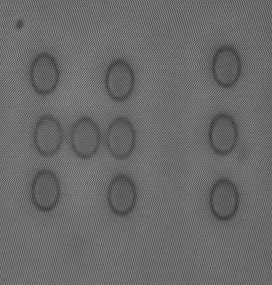In the last session, we made some hash about the "what is biophysics?" question, and at some points the idea of "real" biophysics came up. I have thought some more about this, and have something to write on the issue.
I am always nervous about putting a pin on a "real" anything, because "real" is often defined as the complement of "not real", and I usually am loathe to throw anything out.
Instead, let's use "ideal"...
Seth's definition of Ideal Biophysics: Ideal Biophysics is what occurs when you can't understand the biology without physics, and you can't understand the physics without biology.
OK. It is apparent (to my biased view) that there are more examples of where physics makes sense out of biology than the other way around. But, I can think of an example. The example is Levinthal's "paradox". Like most paradoxes in physics, it isn't. It is a "straw man". It does make a point though. Here goes...
Consider an idealized protein. It is a polymer of N amino acids (AAs). Now, assume the bond between each AA can only take a few orientations M. Now the total number of protein conformations is N^M (^ is "to the power"). To put a more concrete face on it, let's say N=101 and M=3. Then there are 3^101 conformations of the protein. Now, let's assume that the protein can switch conformations at the rate of 10^13 per second (this is actually ~100-1000 times too fast to be realistic). Then we conclude the following: if the protein finds it's native state by a random, serial, sampling of the available states, then it should take ~10^27 years to fold, approximately. This is longer than the age of the universe.
However, protein's fold in, at most, minutes and usually in milliseconds or seconds (101 residues is not large, so the latter is more reasonable for our ideal case).
How does this happen?We'll answer it by posing another example, put forward by Dawkins (of "Selfish Gene" fame). Dawkins asked how long it would take a monkey to write Hamlet's quote "Methinks it is like a weasel." There are 28 characters, including 5 spaces. The alphabet has 27 characters for each location (26+space). If the monkey only had these letters on a keyboard, it would take ~10^40 keystrokes. However...
If the monkey cannot change those letters that are already correctly in place, then the monkey takes only a few thousand keystrokes!OK. So what's the point? Is it time to put me in a straight jacket? I hope not. The point is that getting around the "paradox" requires the presupposition that certain arrangements are "correct". This is not spooky, really. What it means is that understanding the physics of protein folding requires understanding that evolution has taken place and is ongoing - a
biological fact.
Put another way, what it means is that when we start by saying "consider a protein" we are automatically excluding those sequences which can only fold by executing a serial search of the available conformational space.
More precisely, and to bring in more ideas from the last session, the statement should read more like "consider a functional, single-domain protein". What Levinthal was getting at (he wasn't confused - he set up the paradox to shoot it down) was that the ensemble of possibilities given "functional single-domain protein" automatically must exclude a very large number of possible amino acid sequences. The ability to fold in biologically relevant time is a constraint on the ensemble.
And, as I mentioned, when you see a "funnel" representing a protein landscape, the usual X-axis is literally "the number of native contacts" in the same way that you could consider the "number of correct letters" as a suitable reaction coordinate for the Hamlet-writing monkey.
-Seth






